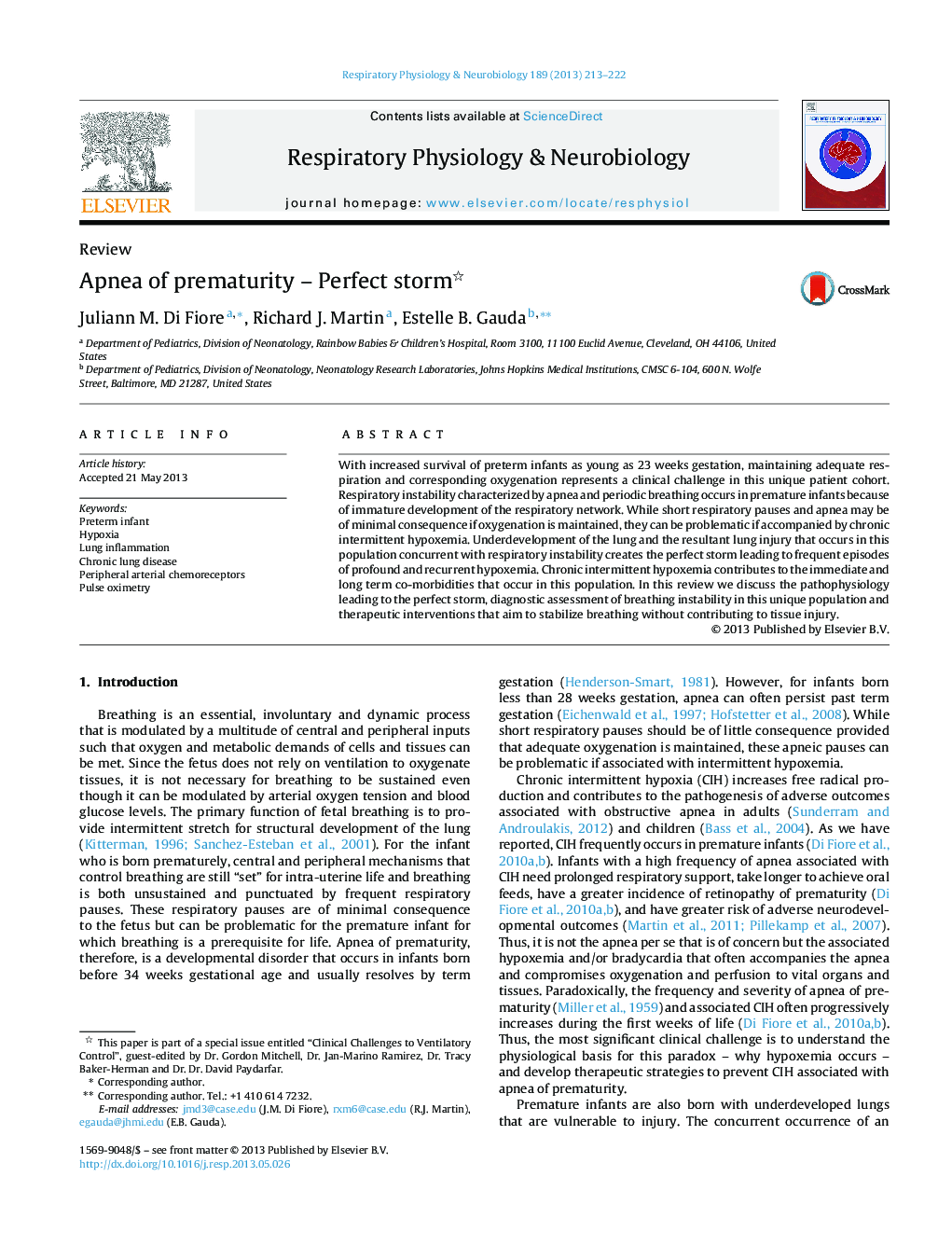| Article ID | Journal | Published Year | Pages | File Type |
|---|---|---|---|---|
| 5925982 | Respiratory Physiology & Neurobiology | 2013 | 10 Pages |
Abstract
With increased survival of preterm infants as young as 23 weeks gestation, maintaining adequate respiration and corresponding oxygenation represents a clinical challenge in this unique patient cohort. Respiratory instability characterized by apnea and periodic breathing occurs in premature infants because of immature development of the respiratory network. While short respiratory pauses and apnea may be of minimal consequence if oxygenation is maintained, they can be problematic if accompanied by chronic intermittent hypoxemia. Underdevelopment of the lung and the resultant lung injury that occurs in this population concurrent with respiratory instability creates the perfect storm leading to frequent episodes of profound and recurrent hypoxemia. Chronic intermittent hypoxemia contributes to the immediate and long term co-morbidities that occur in this population. In this review we discuss the pathophysiology leading to the perfect storm, diagnostic assessment of breathing instability in this unique population and therapeutic interventions that aim to stabilize breathing without contributing to tissue injury.
Related Topics
Life Sciences
Biochemistry, Genetics and Molecular Biology
Physiology
Authors
Juliann M. Di Fiore, Richard J. Martin, Estelle B. Gauda,
